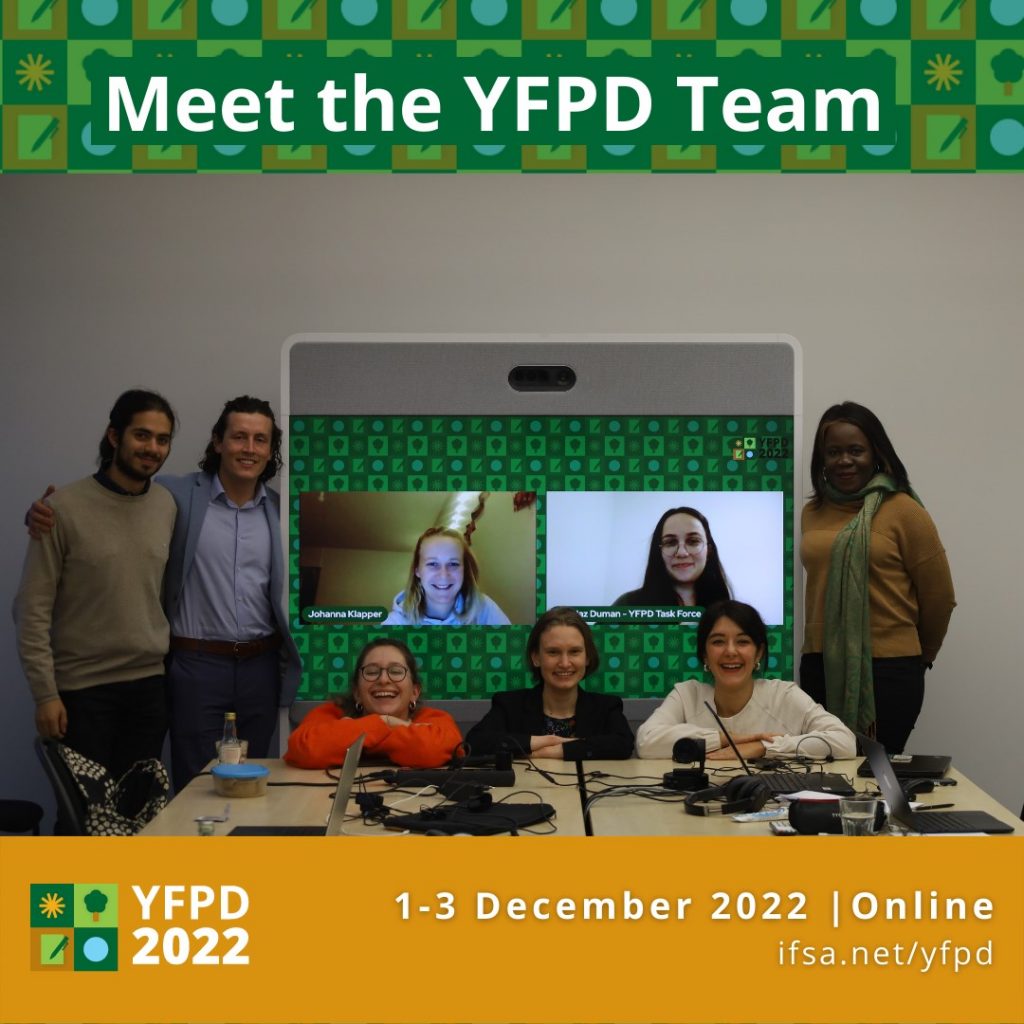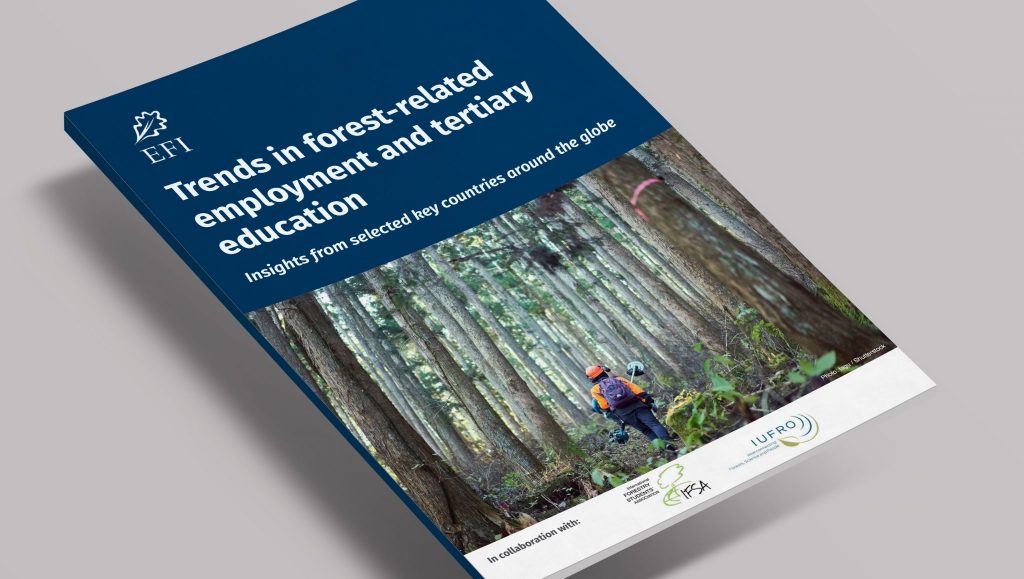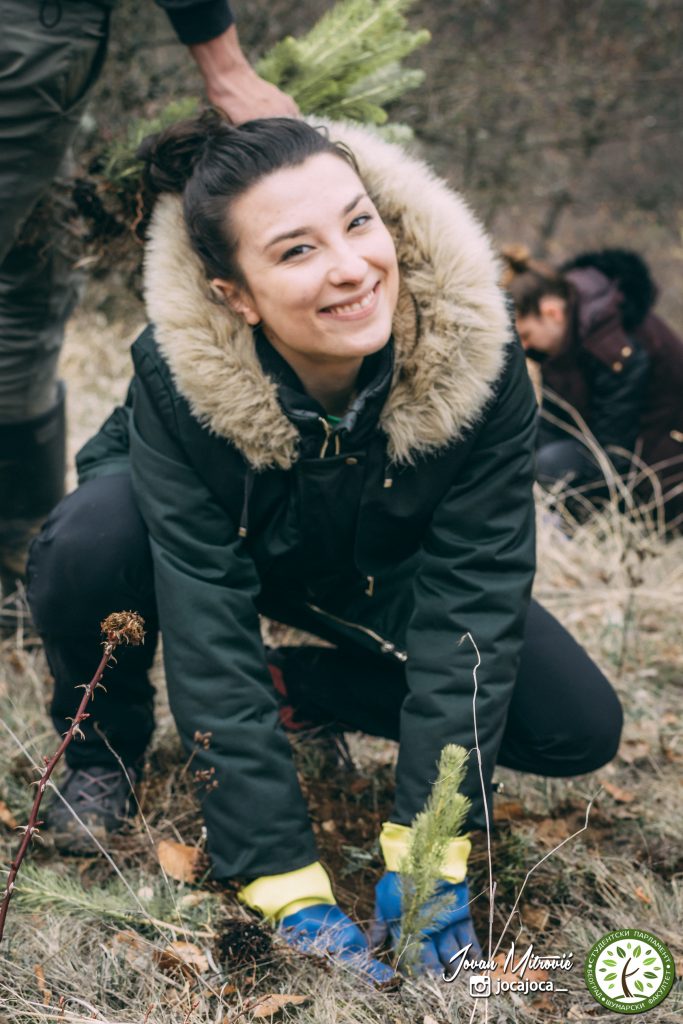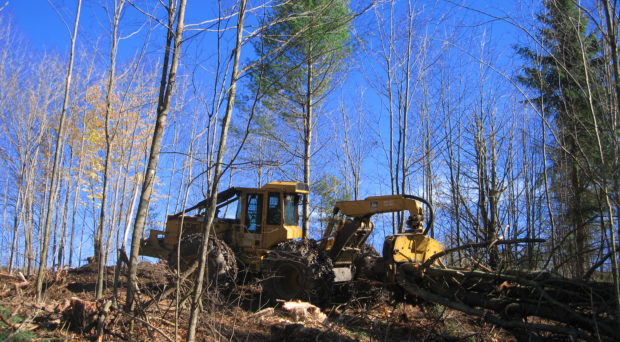Youth Forest Policy Days (YFPD) – 1-3 December 2022
Youth Forest Policy Days (YFPD) – 1-3 December 2022
Guest blog by Juliet Achieng, European Forest Institute
The current global youth (15-24 years) population stands at 1.2 billion translating to 16% of the global population and is expected to rise further by 7% by 2030[1]. The youth have immense potential and can provide innovative solutions to promote development. The need for equipping the youth with knowledge and opportunities that will allow them to thrive and showcase their abilities has been highlighted numerous times. An example of a youth led initiative and first of its kind is the YFPD, a conference-like online event organized by youth for youth to enable the youth community to exchange knowledge and gain more insights about international forest policies. The three-day online event employed diverse formats such as workshops, plenary and parallel sessions and role play game. A living library session focusing on working life provided an opportunity for the participants to be inspired to take action by stories from fellow youth and other professionals in the sector. Through the networking session, the participants had the chance to meet and exchange ideas and experiences with the professionals and participants.

IUFRO in Stockholm
NOTE: This text is reblogged without changes from a blog post published by the Congress Organizing Committee of the XXVI IUFRO World Congress 2024, Stockholm, Sweden, on their website https://iufro2024.com/iufro-young-professional-attends-stockholm50/, 7 July 2022.
IUFRO in Stockholm
Stockholm invites the world to collaborate for multilateral environmental action and to transition into sustainable and green societies.

From tradition to innovation: Insights into trends in forest-related employment and tertiary education
NOTE: This text is reblogged without changes from a blog post authored by Juliet Achieng that originally appeared on the EFI Resilience Blog, https://resilience-blog.com/2021/11/11/from-tradition-to-innovation-insights-into-trends-in-forest-related-employment-and-tertiary-education/, on 11 November 2021.

From tradition to innovation: Insights into trends in forest-related employment and tertiary education
Despite their differences in e.g. climate, culture, and culinary preferences, you might be curious to find out what Brazil, China, Finland, Germany, Indonesia, South Africa and United States of America have in common.
The seven countries represent 42.7% of the global forest cover; and six out of the seven countries were among the top producers of forest products globally in 2018. Thus, the forest sector contributes significantly to their Gross Domestic Product (GDP) and creates a high number of full-time equivalent (FTE) jobs (FAO Global Forest Resources Assessment Report, 2015). But when we speak about jobs, do we know what changes are happening in forest-related employment in these countries? What are the major drivers of these changes? What is the state of forest-related green jobs there? How are the countries’ forest-related tertiary education programmes addressing these changes? And what is the future of forest-related employment and education in these countries?
Read more…Coming out of the Pandemic by Interning at IUFRO To top
Coming out of the Pandemic by Interning at IUFRO
By Agustín Rosello

IUFRO Headquarters is a family I will never forget. I still remember when I found out that I had been accepted as a trainee at IUFRO Headquarters in Vienna. I was working in my home office in a remote town in the middle of a country far south in Latin America, organizing the 50th anniversary of the International Forestry Students’ Symposium (IFSS), when I read that e-mail and realized my life was about to change. I started shouting and jumping for joy because finally this corona nightmare was over, and I was going to achieve my dream of working at an international organization in Europe. Austria was my destination and IUFRO my challenge.
Read more…My experience as an IFSA Trainee at IUFRO
My experience as an IFSA Trainee at IUFRO

My name is Mirjana Volarev, and I am from Serbia. I am an environmentalist and a forester with a passion for climate policy. I completed my Bachelor’s degree in Serbia at the Faculty of Forestry, University of Belgrade, and my Master’s degree in Environmental Sciences and Policy at the Central European University in Vienna, Austria.
The power of social innovation to increase the wellbeing of forest-dependent communities in the Carpathian and other mountain regions
The power of social innovation to increase the wellbeing of forest-dependent communities in the Carpathian and other mountain regions
The IUFRO Working Party 4.05.05 Social innovation and entrepreneurship organised a special session of the6th Forum Carpaticum entitled “The power of social innovation in mountain areas to steer a sustainable governance of nature”. Scientists from over the world were brought together (online) to discuss the emergence and development of social innovation in the Carpathian Mountains and beyond. The Forum’s presentations included a conceptual talk based on findings on social innovation in mountain forestry from H2020 SIMRA project coordinated by James Hutton Institute, topics on how social innovation can offer transformative opportunities to forestry in Ukraine; communities’ empowerment through carbon forestry in Slovakia; impacts of social innovation on inequalities in mountain–lowland relationships in Swiss Alps; citizen science and adopting Living Lab approach to foster sustainability transformations and foster biodiversity conservation through participatory management of nature protected areas, and others.
Read more…Helping ensure that forest bioenergy is environmentally sustainable
NOTE: This text is reblogged without changes from a blog post authored by Dr. Brian Titus that originally appeared on the BMC blog network, http://blogs.biomedcentral.com/on-physicalsciences/2021/04/15/forest-bioenergy-sustainable/, on 15 April 2021. This blog post is licensed under a Creative Commons Attribution 4.0 International License. One of the authors of the original study, Dr. Viktor Bruckman, is the Deputy Coordinator of the Former IUFRO Task Force “Forest Biomass Network”.
Helping ensure that forest bioenergy is environmentally sustainable
Can removal of woody materials from forests for renewable bioenergy production be environmentally sustainable? A recent review in Energy, Sustainability and Society demonstrates that a wide range of environmental and social values can be protected when harvesting forest biomass, such as harvest residues, salvaged sub-merchantable trees, diseased or dead trees, and whole-tree thinnings.
Brian Titus 15 Apr 2021

Photo credit: David Paganelli
Seeing the forest for the trees
Seeing the forest for the trees
Guest blog via Sri Lanka’s Ecosystem Conservation and Management Project ESCAMP; first published on Seeing the forest for the trees – ESCAMP
Forty Forest Department’s and other stakeholders participated in a training
organized and financed by International Union of Forest Research Organizations (IUFRO)
learning best restoration practices of forest landscapes

What do current students expect from their future career in the forest-related sector?
What do current students expect from their future career in the forest-related sector?
Guest blog by Lisa C. Prior, Junior Researcher, Joint EFI-IFSA-IUFRO Project, EFI Resilience Office Bonn, Germany
First published on Resilience blog on June 9th (https://resilience-blog.com/2020/06/09/what-do-current-students-expect-from-their-future-career-in-the-forest-related-sector/
This is one of the questions the “Global Students Networking and Green Jobs in the forest sector” project is trying to investigate with their recently launched global survey among students and recent graduates of forest-related higher education programs.
The Green Jobs project is coordinated by the European Forest Institute (EFI) in collaboration with the International Forestry Students’ Association (IFSA) and the International Union of Forest Research Organizations (IUFRO). It investigates the transforming employment trends in the forest sector while putting a special focus on the perspective of students and recent graduates from around the world. The young generation is a key actor of the future whether as professionals, leaders, or educators. Their skills and advocacy will be essential for strengthening the forest sector towards a sustainable future.

Building on a literature review and an expert workshop investigating the current changes of employment in the forest sector, the objective of the survey is to gain a better understanding of the perception of necessary skills and competencies; and employment-related ambitions and preparedness of forest-related students from around the globe.
The questionnaire will take ~20 minutes to complete. We encourage you to share the survey with any students or recent graduates in your networks and further appreciate sharing with contacts at universities that could help to spread the survey among the target group.
Take part in the survey and help us find out what students expect from their future career in the forest-related sector!
Take the survey or share the link with students: https://www.surveygizmo.eu/s3/90242538/8b61967933ae
For further information please contact: lisa.prior@efi.int
COVID-19-induced Visitor Boom Reveals the Importance of Forests as Critical Infrastructure
COVID-19-induced Visitor Boom Reveals the Importance of Forests as Critical Infrastructure
Guest blog provided by Lukas Giessen, Coordinator of IUFRO Research Group 9.05.00 – Forest policy and governance
During the 2020 COVID-19 pandemic, countries around the globe have implemented a certain degree of lockdown, restricting citizens’ freedom of movement and freedom of assembly. An article recently published in Forest Policy and Economics by Jakob Derks, Lukas Giessen and Georg Winkel of the European Forest Institute, Bonn, Germany, aims to illustrate the impact that the measures against the spread of COVID-19 have on forest recreation.
Read more…